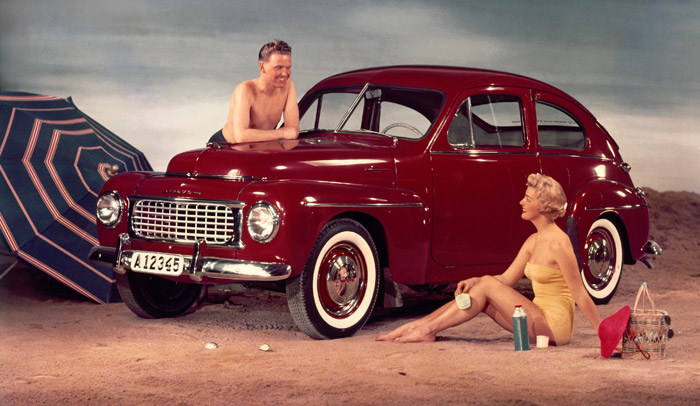Who knows what would have become of the Volvo brand as we know it today if it hadn’t been for the PV444, known as the “little Volvo”?
It was the carmaker’s first post-World War 2 car and it marked the start of the brand’s exports to the United States.
Embodying the new Volvo spirit, the PV444 was unveiled on September 1, 1944 at the then newly-built Royal Tennis Hall in Stockholm. What Volvo showed back then was a prototype that couldn’t even run, as work to develop the model had only been going on for a couple of years. Still, Volvo wanted to show what people should expect from its cars when the war would be over.
The prototype was made of wood and painted black, with silver paint marking the spaces for the windows. Even so, people were impressed with what they saw and Volvo signed 2,300 sale agreements for the PV444 during the exhibition and briefly thereafter. However, the car wasn’t signed off until February 3, 1947, following a period of tough testing. Production started a month later.
The PV444 was Volvo’s first model with a monocoque body and featured an all-new 40hp 1.4-liter 4-cylinder engine, its first overhead valve design for a passenger car. But the PV444 is also important because it paved the way for Volvo in the very important US market. On August 15, 1955 the first trial delivery of PV444s arrived in Los Angeles. A year after, Volvo had reached second place among the import brands in California.
The carmaker originally targeted a total production of 8,000 models, an ambitious goal given that Volvo had previously never built more than 2,000 cars. The “little Volvo”, however, exceeded even the Swedes’ wildest expectations: almost 200,000 PV444s were produced up to 1958. Together with the modernized PV544, produced until October 1965, the total is 440,000 cars. 280,000 of these were sold in Sweden and 160,000 were exported. The PV444 also was the basis for the brand’s first sports car, the Volvo Sport.














